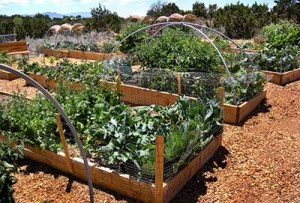by Linda Heideman, Somervell County Master Gardener
 While decorating eggs for the grand kids’ big Easter egg hunt next week, I was reminded that eggshells do more than just hold an egg together! I have tried these ideas, and they really do work!
While decorating eggs for the grand kids’ big Easter egg hunt next week, I was reminded that eggshells do more than just hold an egg together! I have tried these ideas, and they really do work!
1. Add crushed eggshells to the bottom of planting holes, especially for tomatoes, peppers, and eggplant. These crops are susceptible to blossom end rot, which is caused by calcium deficiency. While this deficiency is most often caused by improper watering, there’s no harm in making sure your plants have a steady source of calcium. As the eggshells break down, they’ll nourish the soil, and your plants.
2. Use eggshells as pots for starting plants from seed. Then plant the seedling, “pot” and all, into the garden.
3. Use crushed eggshells to deter slugs, snails, and cutworms. These garden pests are a real pain in the gardener’s neck, and cutworms are the worst, killing seedlings by severing the stems at soil level. All three of these pests have soft undersides, and dislike slithering across anything sharp. Crushed eggshells, applied to the soil’s surface, may help deter these pests.
4. Add them to the compost pile. If you aren’t planting tomatoes or trying to deter slugs, add the eggshells to your compost pile, where they’ll add calcium to your finished compost.
5. If you are feeding birds in your yard, crush up the eggshells and add them to a dish near the feeder. Female birds, particularly those who are getting ready to lay eggs or recently finished laying, require extra calcium and will definitely appreciate it!
No matter how you want to use them, be sure to rinse the shells out well before using them in the garden.
 Master Gardeners Donna Hagar and Shirley Smith met with Trey Sexton and Debi Bly on Wednesday, Feb 18 to begin formulating plans for the installation of a Community Garden located on the new Papa’s Pantry Food Bank Property.
Master Gardeners Donna Hagar and Shirley Smith met with Trey Sexton and Debi Bly on Wednesday, Feb 18 to begin formulating plans for the installation of a Community Garden located on the new Papa’s Pantry Food Bank Property.
 oduces the most beautiful orange and red leaves in the fall, it holds a special place in my garden.
oduces the most beautiful orange and red leaves in the fall, it holds a special place in my garden.
 Besides those endeavors, we publish a monthly newsletter and host regular Community Horticulture Education programs. Somervell County Master Gardeners thrive on the diversified talents of our membership. Some prepare and deliver horticulture-related programs to the public, some design and manage garden projects within the community, others create and maintain websites, write articles and publish newsletters. Many just like digging in the the dirt, but we all share a passion for gardening. And most of all, we do all these things while having FUN!
Besides those endeavors, we publish a monthly newsletter and host regular Community Horticulture Education programs. Somervell County Master Gardeners thrive on the diversified talents of our membership. Some prepare and deliver horticulture-related programs to the public, some design and manage garden projects within the community, others create and maintain websites, write articles and publish newsletters. Many just like digging in the the dirt, but we all share a passion for gardening. And most of all, we do all these things while having FUN!

